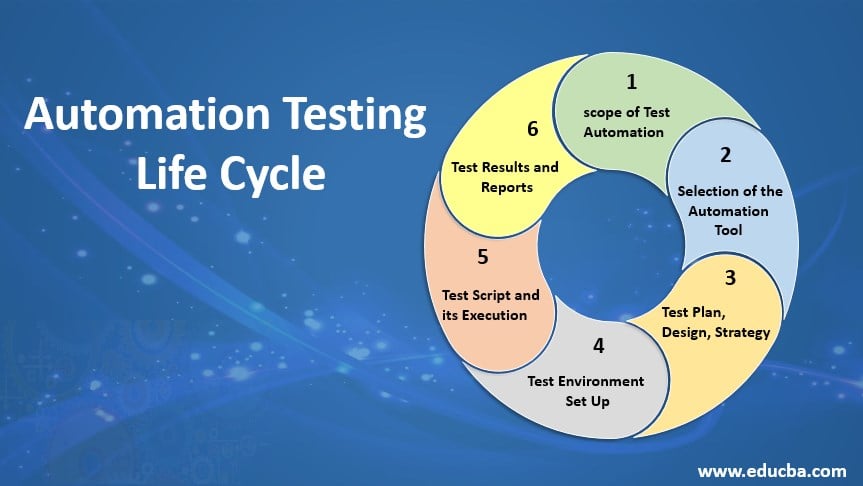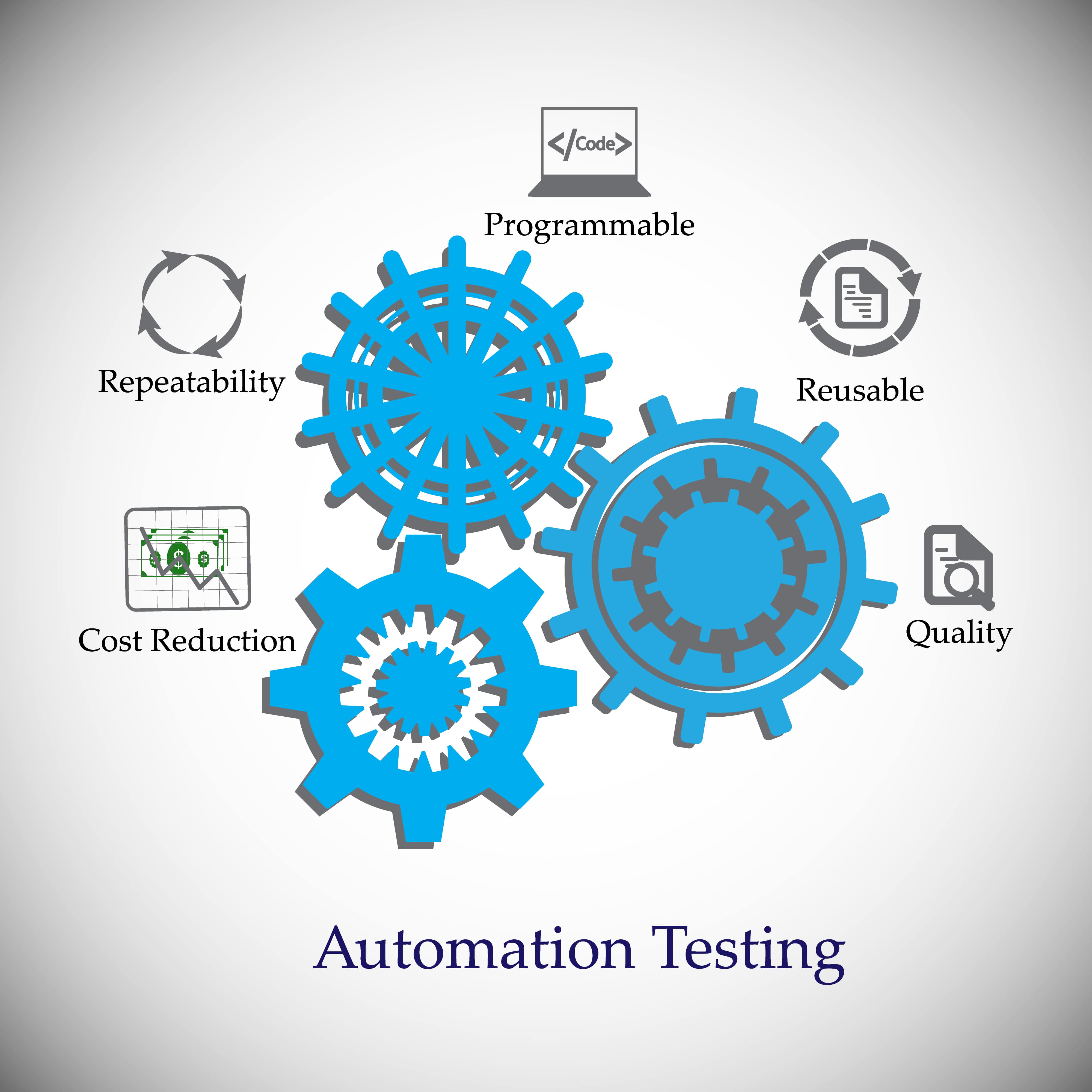Automation Testing Approaches: Finest Practices for Seamless Integration
Automation Testing Approaches: Finest Practices for Seamless Integration
Blog Article
From Manual to Automated Screening: A Comprehensive Overview to Transitioning Efficiently and Efficiently
In the realm of software application testing, the shift from manual to automated processes has actually come to be a significantly essential change for companies seeking to enhance efficiency and precision in their screening methods. As innovation continues to advancement, the need for seamless and effective automated screening approaches has actually never been much more pressing. The journey from handbook to automated testing is not without its difficulties, however when come close to tactically and with a clear strategy in mind, the advantages can be considerable - automation testing. In this thorough overview, we will certainly explore essential steps and considerations crucial for a successful change, from the initial selection of tools to the combination of automation right into existing operations. Remain tuned to uncover the understandings that will assist lead the method for a smoother and a lot more efficient testing procedure.
Benefits of Automated Testing
Automated testing supplies many advantages, boosting performance and precision in software application growth processes. One key benefit is the significant decrease in screening time. Automated examinations can be run concurrently on several gadgets and operating systems, significantly speeding up the testing phase contrasted to hands-on testing. This raised performance enables faster feedback on the high quality of the software, allowing developers to recognize and attend to issues without delay.
Moreover, automated screening makes sure a greater level of accuracy in spotting defects. Uniformity in screening is additionally improved, as automated examinations carry out the exact same steps precisely each time they are run.
Selecting the Right Tools

Firstly, evaluate your needs and purposes. Comprehend the scope of your project, the innovations entailed, and the ability of your team. This analysis will assist you establish the features and capabilities you need in your screening devices.
Secondly, think about the compatibility of the tools with your existing systems and processes. Seamless combination with your present software program growth lifecycle is important to guarantee a smooth transition to automation.
Additionally, assess the scalability and flexibility of the tools. As your screening requires advance, the devices need to have the ability to adapt and accommodate adjustments successfully.
Finally, consider the assistance and area around the devices. When carrying out automated testing, durable support and an energetic customer community can give important sources and support. By carefully considering these elements, you can choose the right tools that straighten with your needs and set the stage for an effective change to automated testing.
Writing Efficient Test Scripts

When crafting examination manuscripts, it is necessary to consider the specific demands of the software program being checked and ensure that the manuscripts attend to all essential functionalities. Descriptive and clear naming conventions for test scripts and test situations can boost readability and maintainability. Additionally, incorporating error handling mechanisms within the examination scripts can assist in determining and resolving problems quickly.
Furthermore, organizing test manuscripts right into modular components can improve reusability and scalability, decreasing redundancy and improving performance in examination manuscript upkeep. Routine evaluations and updates to examine scripts are important to keep speed with evolving software program requirements and performances. By complying with these concepts, testers can develop robust and efficient test manuscripts that add dramatically to the success of automated screening processes.
Integrating Automation Into Workflows
Efficient integration of automation tools into existing operations improves procedures and improves efficiency within software development cycles. When incorporating automation right into operations, it is important to recognize repetitive tasks that can be automated to save time and minimize human mistake. By flawlessly incorporating automated screening devices like Selenium or Appium right into the software application development lifecycle, groups can attain faster responses on code changes, causing quicker insect discovery and resolution. This combination enables continuous testing throughout the advancement procedure, making certain that any problems are identified early on, leading to higher software application high quality. Furthermore, automation can be made use of to cause examinations instantly after each code devote, providing instant recognition and liberating testers to focus on even more read here facility scenarios. Correct combination of automation devices calls for partnership between growth, testing, and operations teams to establish a unified workflow that optimizes effectiveness and efficiency in supplying premium software products.
Guaranteeing a Smooth Transition
Successfully transitioning to automated screening involves meticulous preparation and mindful execution to reduce disturbances and optimize efficiency in the software growth process - automation testing. To guarantee a smooth shift, it is vital to begin by conducting a complete analysis of the present testing processes and determining areas where automation can bring the most substantial advantages. Involving with all stakeholders beforehand at the same time, including designers, testers, and project managers, is important for gathering support and buy-in for the automation initiative
Interaction is essential throughout this shift stage. Clear communication of the objectives, benefits, and assumptions of automated testing aids to manage any type of resistance or problems that may arise. Additionally, offering sufficient training and sources for group participants to upskill in automation devices and strategies is vital for making sure an effective change.

Conclusion
Finally, transitioning from guidebook to automated testing uses numerous benefits, consisting of raised efficiency and reliability. By picking the suitable tools, creating reliable examination scripts, and integrating automation seamlessly into operations, organizations can ensure a successful and smooth change. It is vital to welcome automation as a beneficial asset in software testing procedures to enhance general top quality and productivity.
In the world of software program testing, the change from guidebook to automated procedures has actually come to be a progressively crucial change for companies looking for to enhance performance and accuracy in their testing practices. Automated examinations can be run at the same time on numerous tools and useful reference operating systems, considerably speeding up the screening phase contrasted to manual testing. Uniformity in screening is also enhanced, as automated examinations implement the exact same actions specifically each time they are run.To guarantee the effective execution of chosen testing tools, the production of effective examination manuscripts plays a crucial duty in validating the performance and efficiency of automated procedures - automation testing. By following these concepts, testers can produce robust read this article and efficient test scripts that add dramatically to the success of automated testing procedures
Report this page